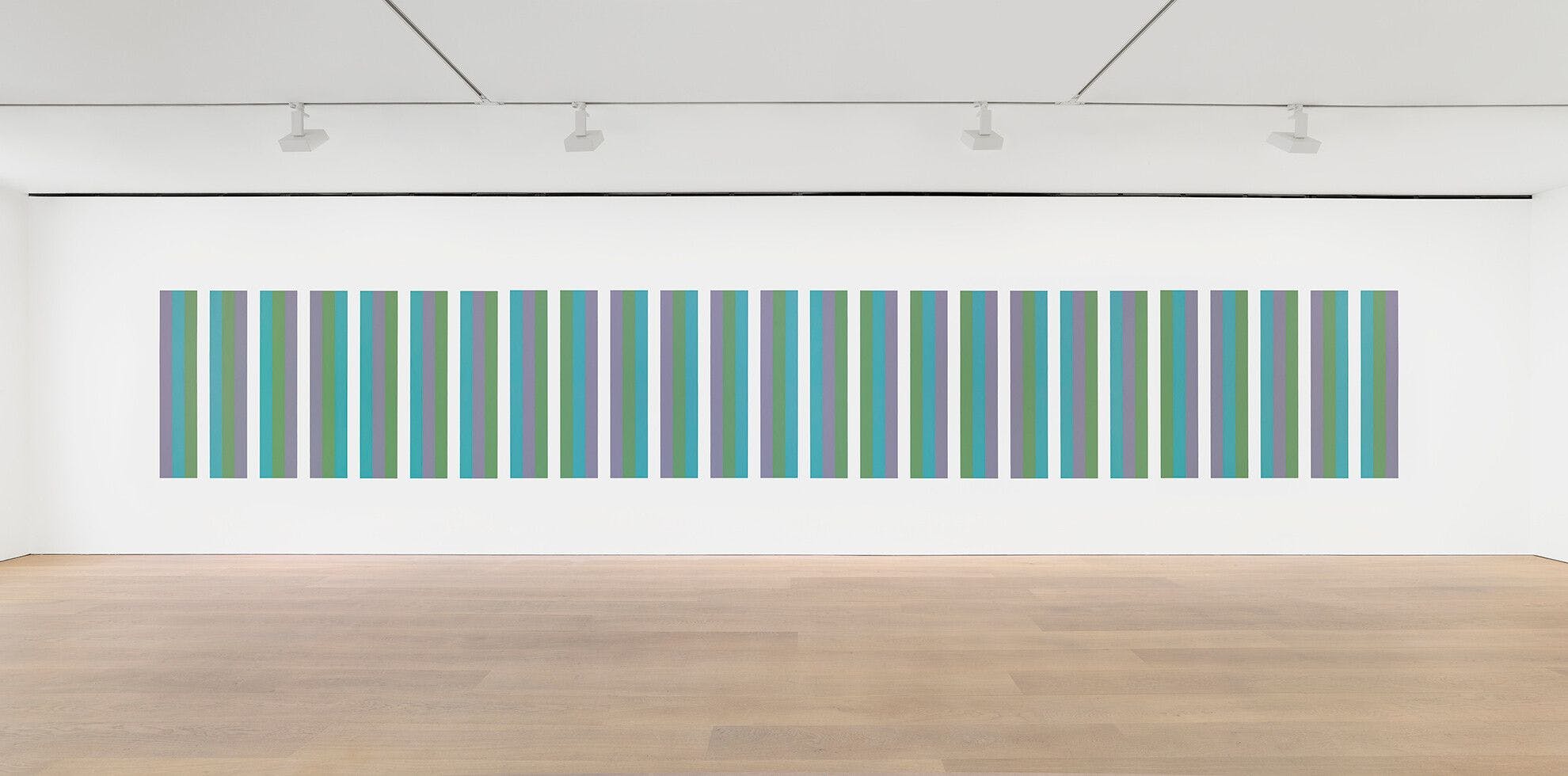Bridget Riley
Since 1961, Bridget Riley (b. 1931) has focused exclusively on seemingly simple geometric forms, such as lines, circles, curves, and squares, arrayed across a surface—whether a canvas, a wall, or paper—according to an internal logic. The resulting compositions actively engage the viewer, at times triggering sensations of vibration and movement.
Learn MoreSurvey
Exhibitions

Explore Exhibitions
Artist News
Selected Titles
Request More Information